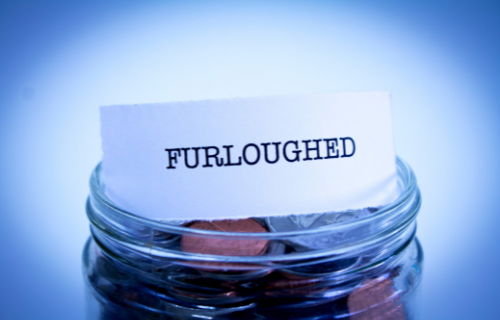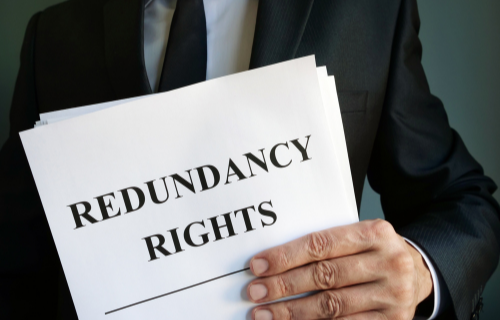Difference Between Furlough and Redundancy
A shift in the profitability of a business often forces employers to make drastic changes. And one of these is the number of workers. You may have heard about terms such as layoffs. Or you might have been laid off yourself. The circumstances leading to the reduction of a workforce differ. And these determine how the situation will be referenced. Various terms such as furlough, layoffs and redundancy are used to refer to the changes in a workforce. However, they are sometimes used interchangeably, despite the differences. Just what is the difference between furlough and redundancy? Let’s explore below.

Furlough
A furlough is a temporary and mandatory leave of absence where an employee is required to resume their duties after a specified period. It can be referred to as an involuntary leave or a temporary layoff. Furloughs occur as a result of changes in business due to issues such as the closure of factories, lack of budgets to sustain the workforce or government shutdowns among others.
Although employees do not get paid during this period, they retain their jobs and the benefits. This is a benefit for companies since they can call back in the employees when conditions improve as opposed to hiring others. As such, companies save on costs that would have been spent hiring and training new staff.
During difficult moments such as the coronavirus pandemic, some companies reduced costs by having mandatory unpaid day-offs. Seasonal service providers may also opt for this, preserving their workforce when the business season returns.
There are different rules regarding furloughs. Furloughs are different for salaried and hourly employees. For instance, if a salaried employee works during the furlough, they must be paid the full salary. However, hourly employees can be paid for the hours worked. The period that a company can put an employee on furlough varies by state.

Redundancy
This is the reduction of a workforce because the job specification or position is no longer required in the company. Redundancy only occurs if a given position is no longer required.
For instance, the introduction of computers saw many positions become redundant. This is because computers replaced the workforce, and what was previously done by several people could be efficiently done by one. Redundancy can also occur if a corporation no longer requires certain work, closure of the business or the need to reduce a workforce.
Redundancy may be forced or voluntary. A voluntary redundancy often comes with incentives such as a severance package. Workers may also receive their wages during the notice period. In a forced redundancy, however, employees are not offered incentives.
Similarities Between Furlough and Redundancy
- Both reduce the workforce in an organization
Differences Between Furlough and Redundancy
Definition
A furlough is a temporary and mandatory leave of absence where an employee is required to resume their duties after a specified period. On the other hand, redundancy is the reduction of a workforce because the job specification or position is no longer required in the company.
Causes
A furlough is caused by drastic changes in a business such as the closure of factories, lack of budgets to sustain the workforce or government shutdowns. On the other hand, redundancy occurs when a company no longer needs the services offered by an employee.
Timeframe
While a furlough is a temporary reduction of the workforce, a redundancy is permanent reduction of the workforce.
Furlough vs. Redundancy: Comparison Table

Summary of Furlough vs. Redundancy
A furlough is a temporary and mandatory leave of absence where an employee is required to resume their duties after a specified period. It can be caused by drastic changes in a business such as the closure of factories, lack of budgets to sustain the workforce or government shutdowns. On the other hand, redundancy is a permanent reduction of a workforce because the job specification or position is no longer required in the company.
FAQs
Do you get redundancy pay if you are furloughed?
While regulations regarding redundancy payments vary, an employee who was made redundant while on furlough should be paid a redundancy fee depending on the state laws.
Do you get paid during a furlough?
No. You do not get paid during furlough. However, you retain your job.
Can I be fired during furlough?
Yes. You can be fired during furlough.
Can my boss make me redundant after furlough?
Yes. Your employer can make you redundant while on furlough.
- Difference Between Profit Center and Investment Center - July 2, 2022
- Difference Between Anti-Trust and Anti-Competition - June 6, 2022
- Difference Between Stocktaking and Stock Control - June 6, 2022
Search DifferenceBetween.net :
Leave a Response
References :
[0]OECD. OECD Employment Outlook 2020 Worker Security and the COVID-19 Crisis: Worker Security and the COVID-19 Crisis. OECD Publishing, 2020. https://books.google.co.ke/books?id=NcHvDwAAQBAJ&printsec=frontcover&dq=Difference+Between+Furlough+and+Redundancy+layoffs&hl=en&sa=X&ved=2ahUKEwj6y4q3n-P1AhUnA2MBHcLBBBkQ6AF6BAgLEAI#v=onepage&q&f=false
[1]Wayne F Cascio. Responsible Restructuring: Creative and Profitable Alternatives to Layoffs. Berrett-Koehler Publishers, 2002. https://books.google.co.ke/books?id=epjyYicF1acC&printsec=frontcover&dq=Difference+Between+Furlough+and+Redundancy+layoffs&hl=en&sa=X&ved=2ahUKEwiX59PXn-P1AhVh5OAKHY5bDBk4ChDoAXoECAoQAg#v=onepage&q&f=false
[2]Marks M & Meuse K. Resizing the Organization: Managing Layoffs, Divestitures, and Closings. John Wiley & Sons, 2003. https://books.google.co.ke/books?id=oR1d-BdP0yUC&printsec=frontcover&dq=Difference+Between+Furlough+and+Redundancy+layoffs&hl=en&sa=X&ved=2ahUKEwiX59PXn-P1AhVh5OAKHY5bDBk4ChDoAXoECAsQAg#v=onepage&q&f=false
